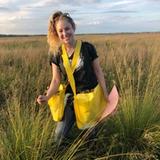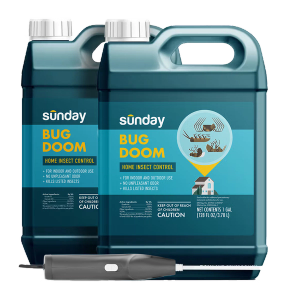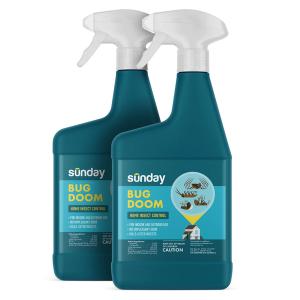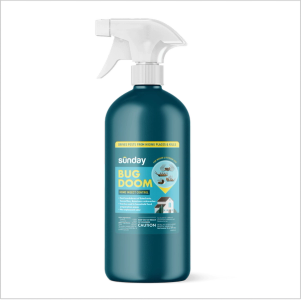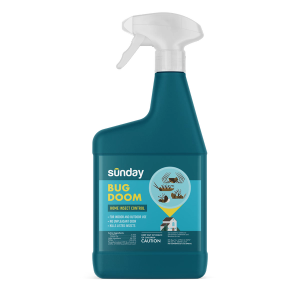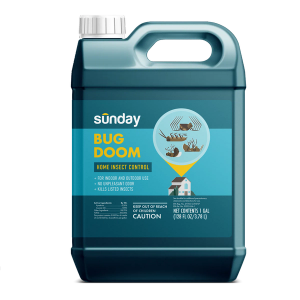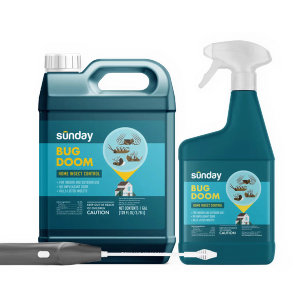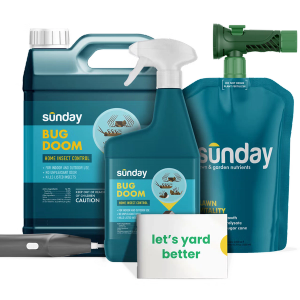Though we can’t help lessen the initial shock and some of the much needed cleaning that follows a flea infestation, at Sunday, we can help you eradicate the pest and guide you through preventative measures so you can ensure you and your pet are flea-free from here on out.
What are fleas?
Fleas are biting, blood-feeding ectoparasites that cause dermatitis in pets and can be vectors of pathogens and parasites that affect both people and pets. They’re able to enter homes on pets or wildlife that infest structures, and often infest areas in and immediately surrounding pet bedding sites. Outside, fleas tend to be found where pets or wildlife bed down, especially areas with cover and loose soil (e.g., under vegetation, under porches). The most common species, and the primary species most pet owners are warned about by the vet, is the cat flea (Ctenocephalides felis).
How to ID fleas
Typically, fleas are most readily spotted when crawling through the fur or jumping from an infested pet, or near pet resting areas. All fleas have this signature "strong jump" due to their hind legs, are fairly tiny—only ranging in size of about 1–3 mm—and are flattened from the sides, rather than flatted top to bottom. This is an important distinguishing characteristic because it’s what differentiates them from bed bugs (a very common look alike).
They can also at times be identified in the larvae stage or by their droppings. Their larvae are white, look like small worms, and range in size from 1–5 mm, whereas their waste, commonly called "flea dirt" looks like black pepper specks (sometimes these can even be curly!) and is commonly found in pet hair, pet bedding, or areas pets frequent (e.g. sleep and lay down). Flea larvae feed on the adult droppings left behind in pet bedding and carpets.
Any look alikes out there? You bet. The common fleas can definitely be misidentified with a few other insects but tend to be most confused with springtails and booklice.
Springtails
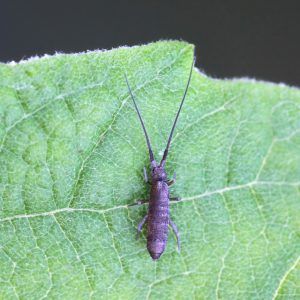
Book lice
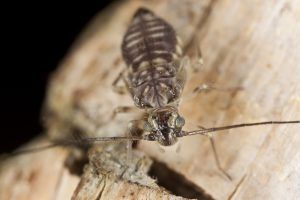
Sunday Tip:
One monitoring technique used to figure out if fleas are present is to wear khaki or light colored pants tucked into white socks and walk into the suspected habitat. Fleas will sense the warmth and vibration, then jump onto the socks and/or pants and can be easily observed due to the contrasting color.
Where do fleas live?
Fleas are a type of pest that is incredibly adaptable and widespread. They can thrive both indoors and outdoors, and found in every region of the U.S. (their presence really does span nationwide!). Within an indoor setting, fleas can live virtually anywhere, especially carpets and pet bedding. Outdoors, fleas are typically found in damp, shaded soil, under porches or bushes, as well as anywhere pets sleep or where wildlife is active (especially species that frequent backyards like squirrels, opossums, raccoons, and skunks).
When are fleas most active?
Fleas survive winter on wildlife hosts and within their dens and nests. During this time, adult fleas are able to feed and breed. Once temperatures warm and fleas can survive in the environment, they can be picked up by your dog or cat. Survival and growth are most successful during warm, moist winters and springs, but the optimal conditions for flea's life cycle is a range of 70°F to 85°F with higher humidity levels.
Natural pest prevention and reduction practices
Fleas are best managed preventively. If you're a pet owner, it’s highly advised to treat pets with vet recommended topical or oral medication prior to having any conflict with fleas to begin with. If you are reacting to a flea infestation, we get it. It happens (even when you’ve followed all the right steps!). Here’s how to proceed:
- Flea comb it. First, you’ll want to utilize a flea comb to remove fleas and flea dirt
- Get out the flea shampoo. Wash your pet with vet recommended flea and tick wash.
- Clean everything. When you find fleas, you’ll need to clean the entire home. First by vacuuming carpets and areas where pets sleep, followed by washing pet bedding and even utilizing flea-spray for upholstery.
Sunday Tip:
Be vigilant in your sanitation measures and maintain a high level of cleanliness all pet areas.
The Sunday way to a flea-free home + yard
Sunday’s Nix Ticks is a cedarwood oil yard spray that kills and repels fleas (among other pests) on contact—and for sustained periods of time. Here’s how it works:
- As with all pesticides, always read the label first, wear eye protection and full length clothing when applying.
- Decide what area you spend the most time in. This is your "protected zone" and where you will be spraying the barrier of Nix Ticks around.
- For fleas, spray any dark corners of your lawn area including wood piles or edges of woods where fleas may leave larvae.
- Then, spray the entire lawn area thoroughly.
- Repeat steps 3 and 4 after seven days from your first application.
- Apply every 30 days. Regular application is extremely important to increase and maintain effectiveness.
Application Tips:
- Spray in an up and down motion working quickly to cover your protected lawn area, trees, mulch, and/or bushes until blades and leaves are fully wet.
- Avoid spraying consumable vegetables, flowers, succulents, and pollinator friendly plants.
Cited sources
Cornell University. Fleas. New York State Integrated Pest Management.
Ohio State University Extension. Fleas. Ohioline.
University of Minnesota Extension. Fleas. UMN Extension.


